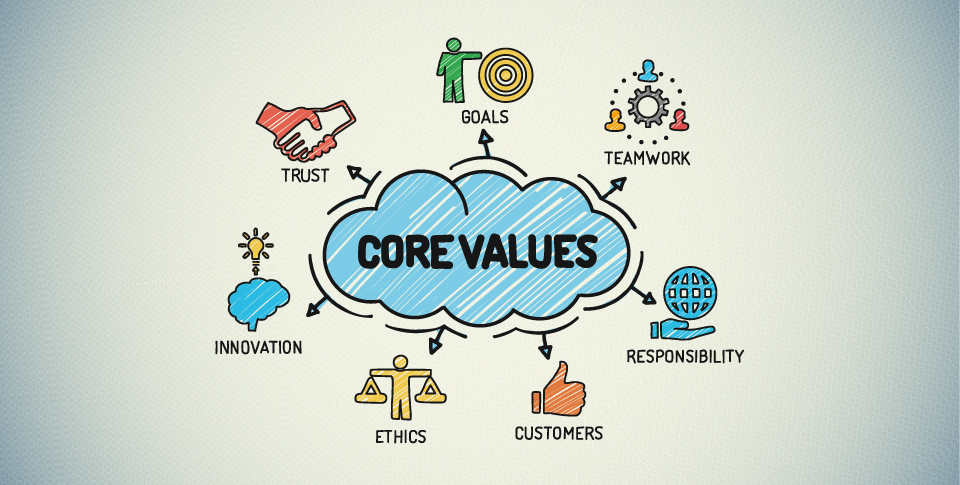What Exactly Are Core Business Values?

The fundamental beliefs that drive an organization’s operations and culture are known as its core business values. They define an organization’s behavior, priorities, and what is important in day-to-day decision-making. When faced with difficult decisions or situations, these values serve as guiding principles for employees. In other words, core business values lay the groundwork for all other aspects of a company’s operations.
What Is the Importance of Core Business Values?

Strong core business values are critical to success in any industry because they guide how to conduct yourself inside and outside the workplace while representing your brand or company image.
A clear set of well-defined core business values allows businesses to differentiate themselves from their competitors by establishing standards that customers know they can rely on when dealing with them – such as quality products/services at competitive prices; dependable customer service; ethical practices; respect for others, and so on.
Additionally, having clearly articulated expectations helps ensure everyone is held accountable during performance reviews because everyone knows what is expected of them (which often contributes towards higher employee retention rates).
Finally, establishing core business values ensures consistency across different departments and teams by providing direction on how to best approach each task, regardless of who is responsible for executing it!
How to Create Your Own Core Business Values

The first step in developing your core business values is to identify key traits you want to be associated with your team and organization, including collaboration over competition or listening before speaking, among other things.
Once you’ve identified these, it’s time to turn them into specific statements that will help guide your daily decision-making processes in the future!
Here are some starting points:
First, ask yourself, “What do I value most about our work culture?”
This question should help focus efforts while allowing for flexibility depending on various situational variables (e.g., one might prioritize speed over perfection depending on the situation).
Next, consider using resources such as SWOT analysis or interviewing existing staff members about their perspectives to ensure you get all the important views; finally, once completed, share results widely across the entire workforce, including senior management, so everyone understands!
Once finalized, ensure that the process is operationalized by incorporating new guidelines into HR policies and training programs and creating measures for enforcement, such as quarterly review meetings, etc. It is also critical to revisit periodically to ensure that you stay updated with the latest trends and changing times.









